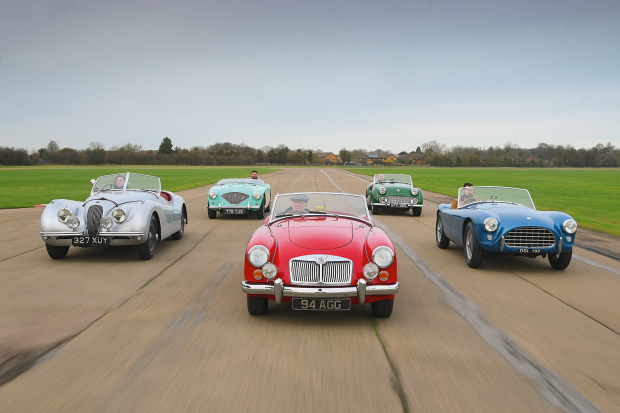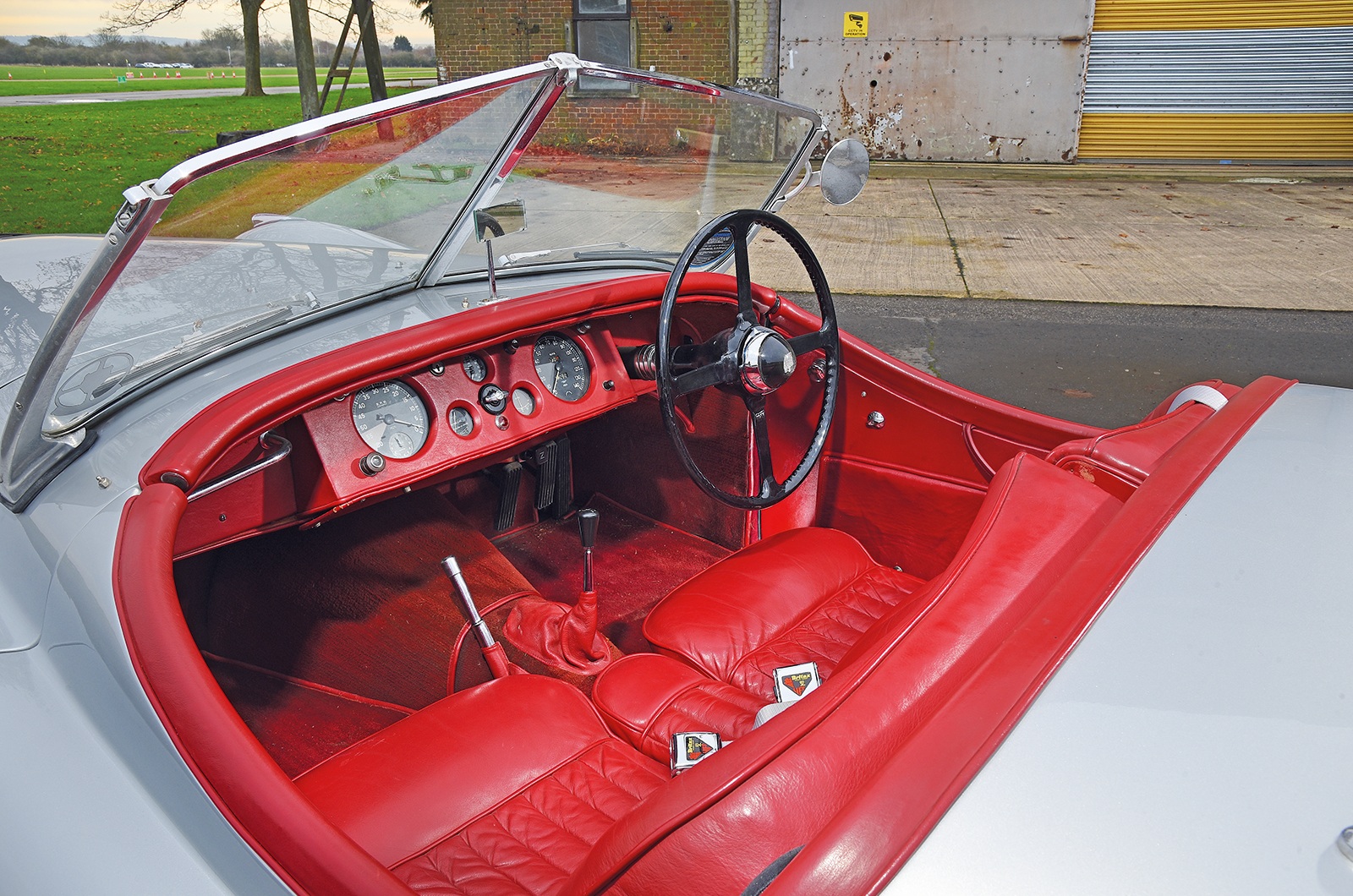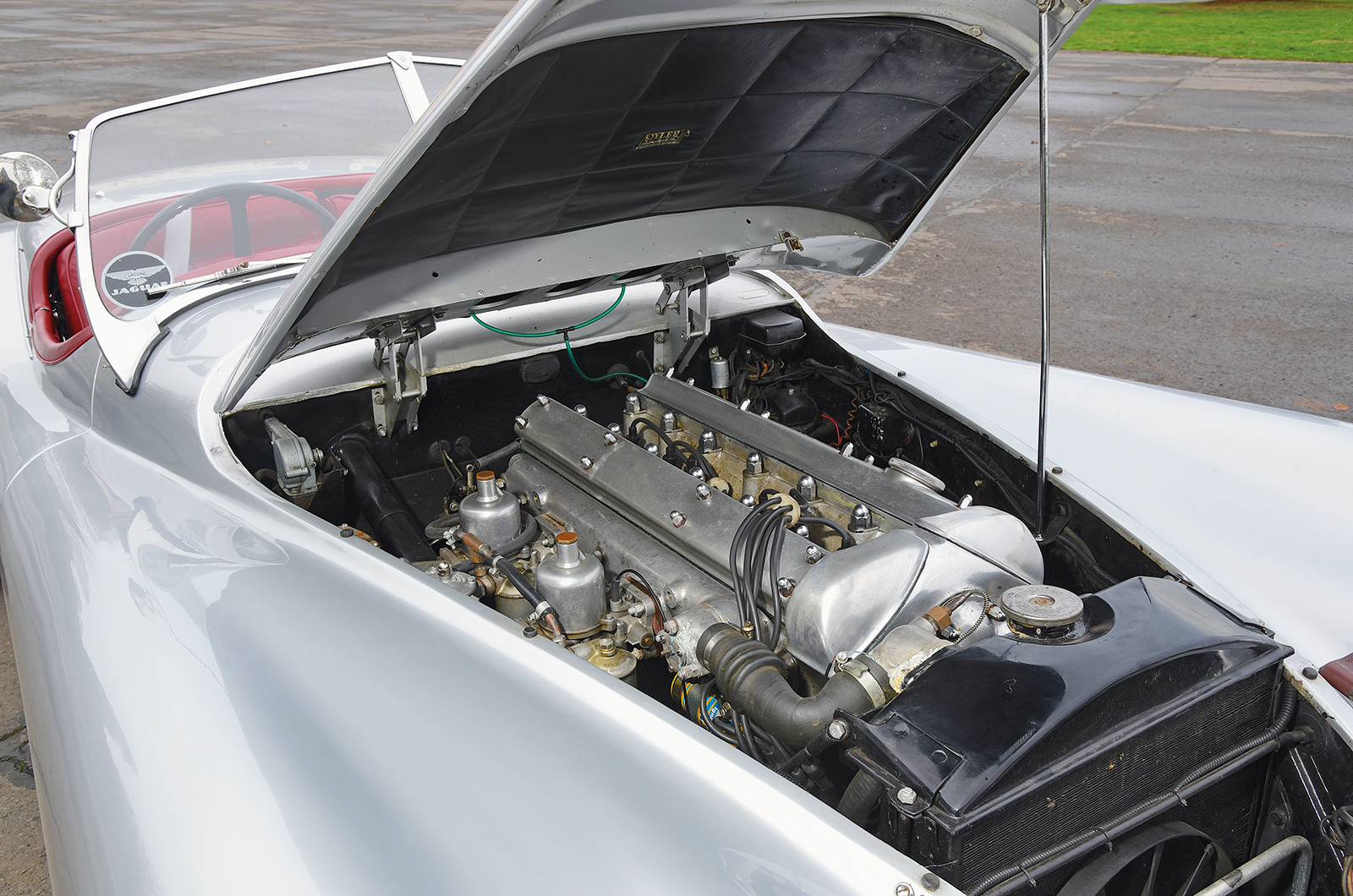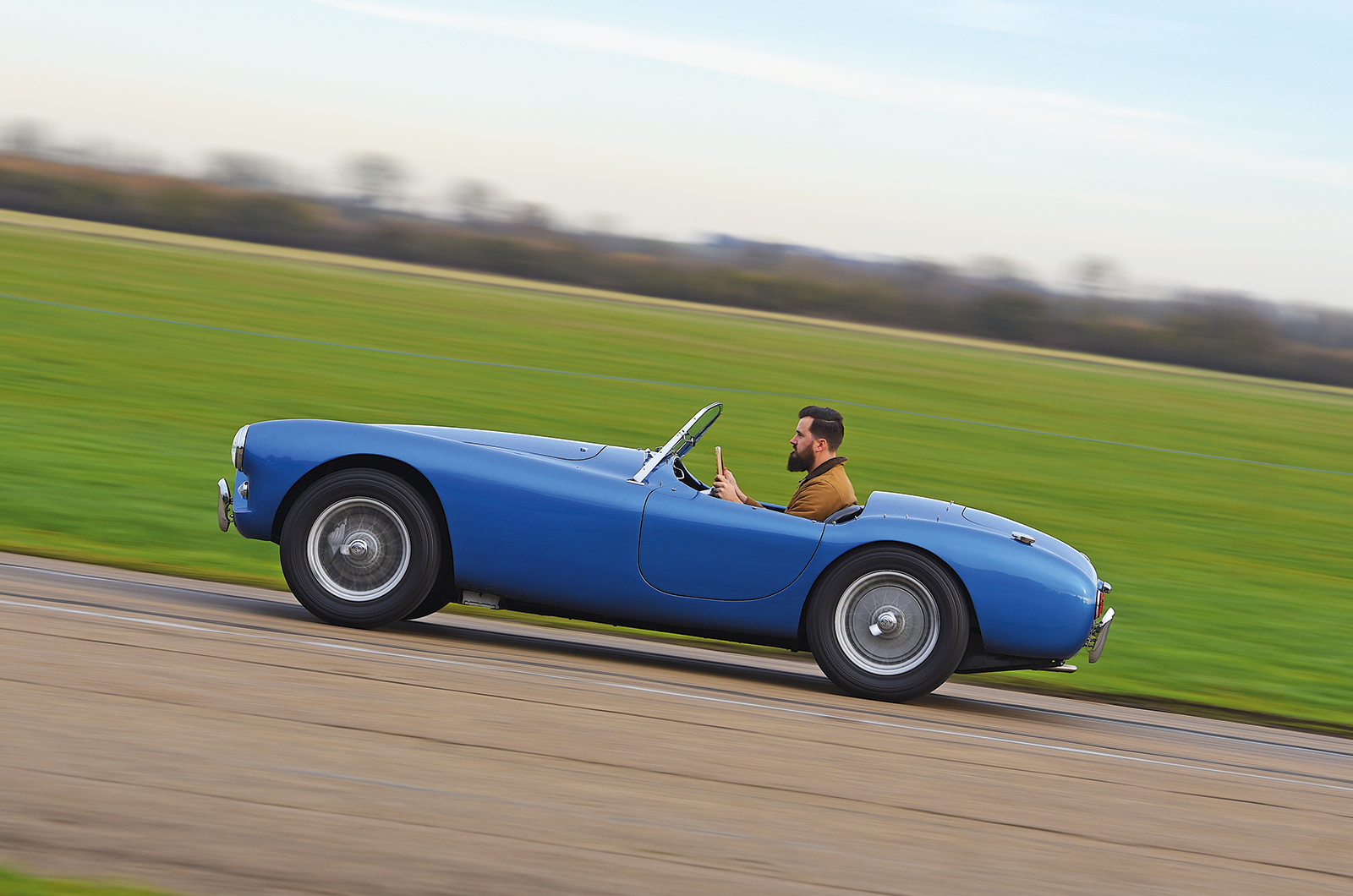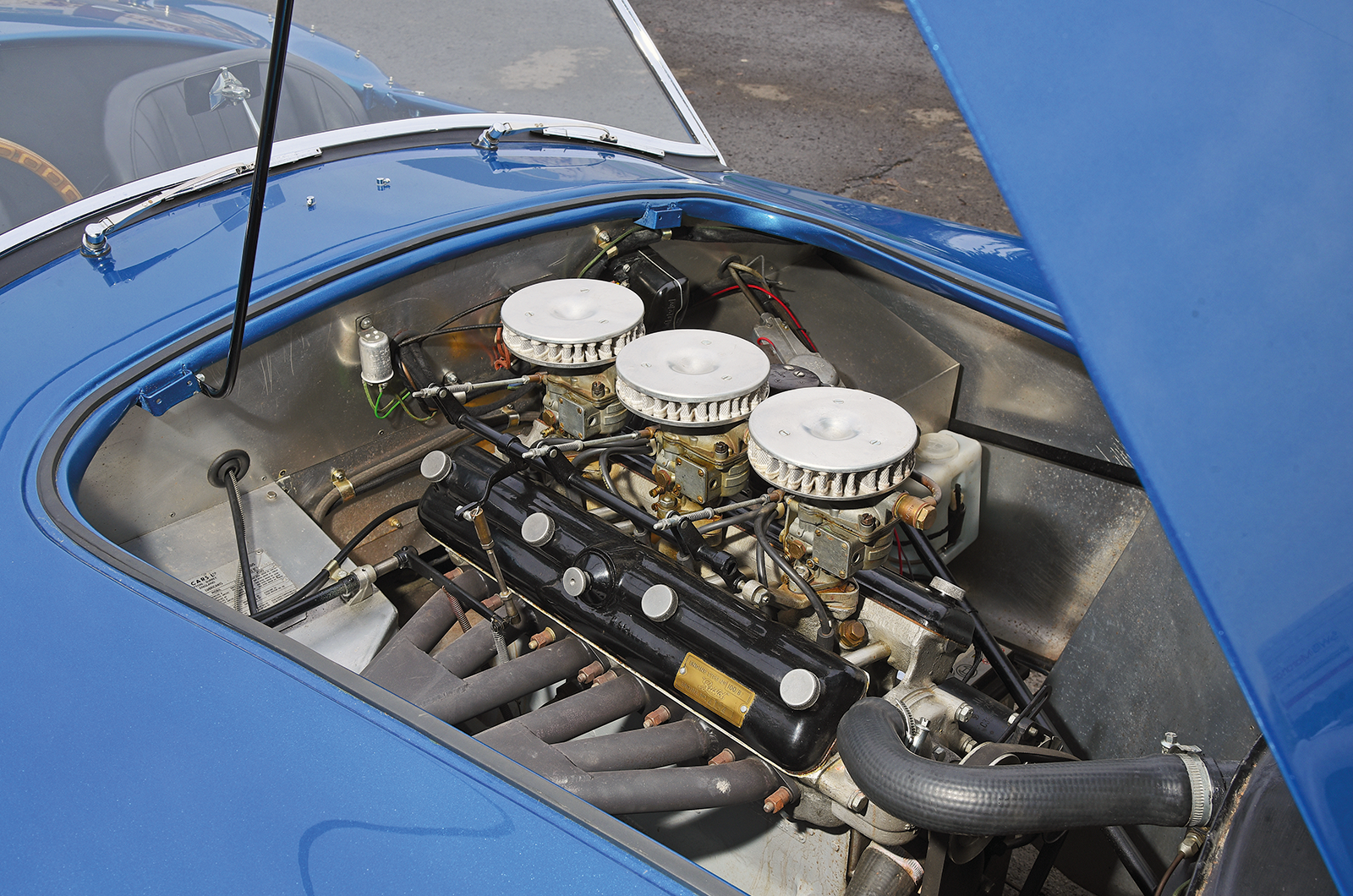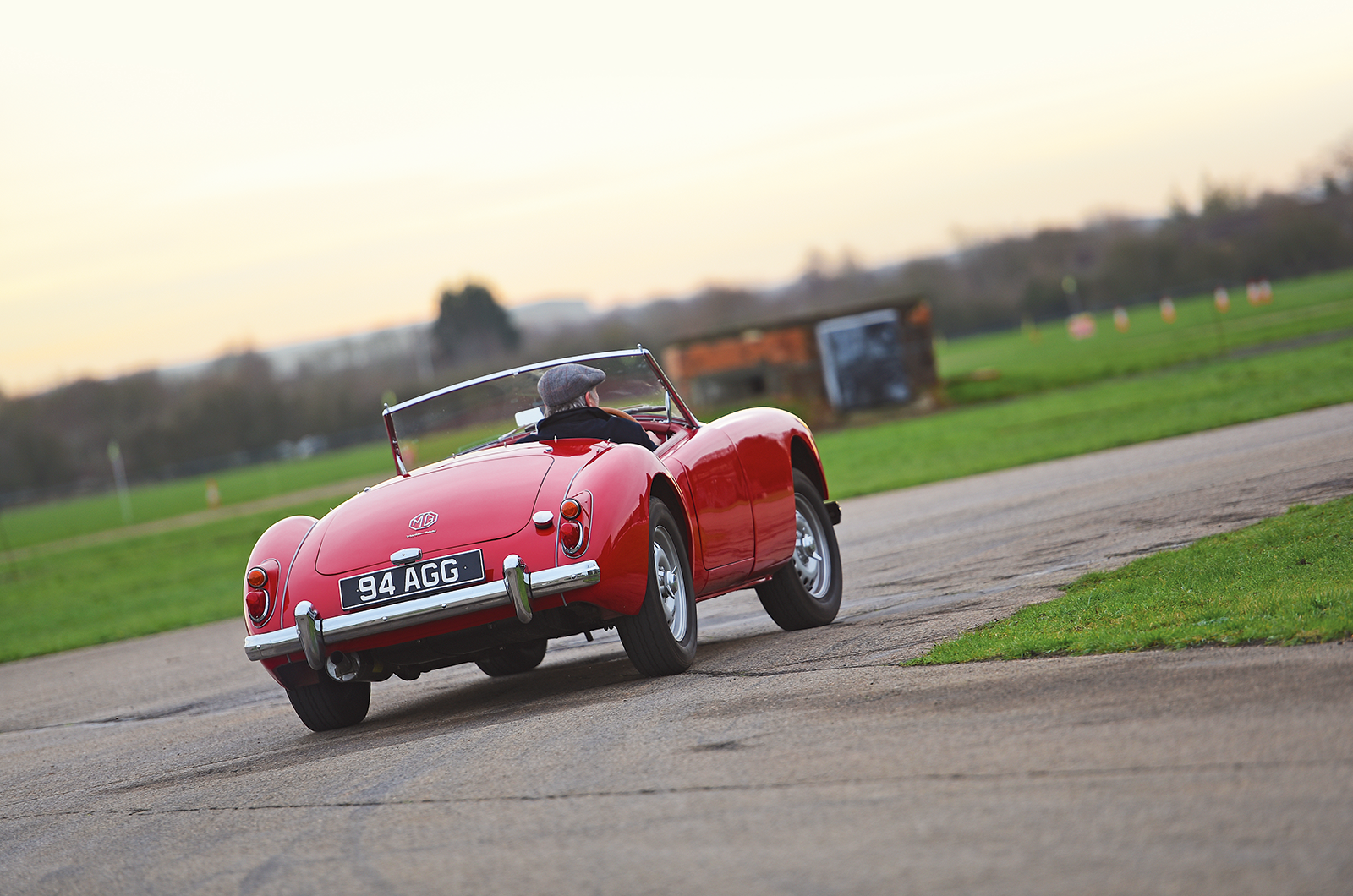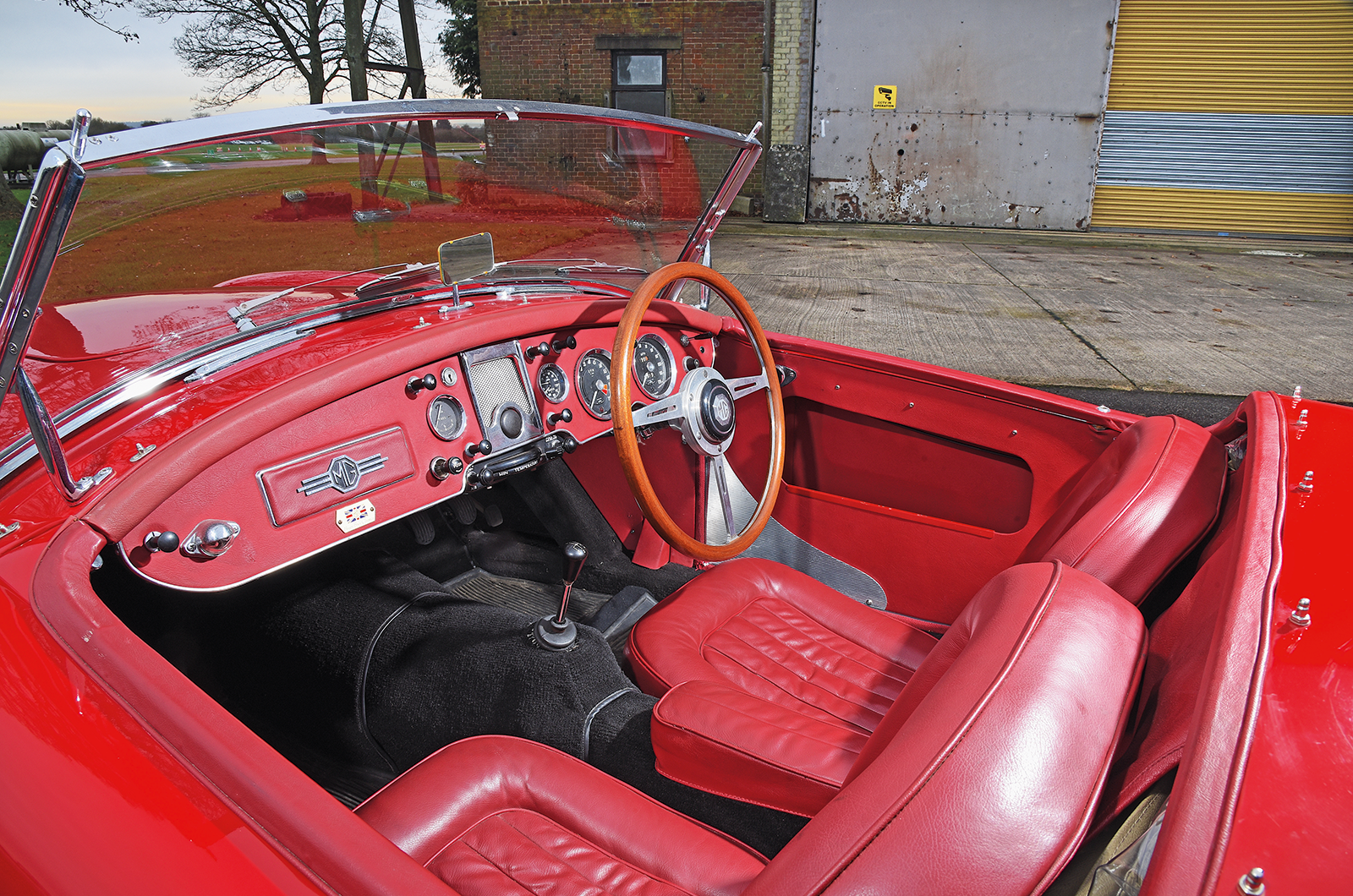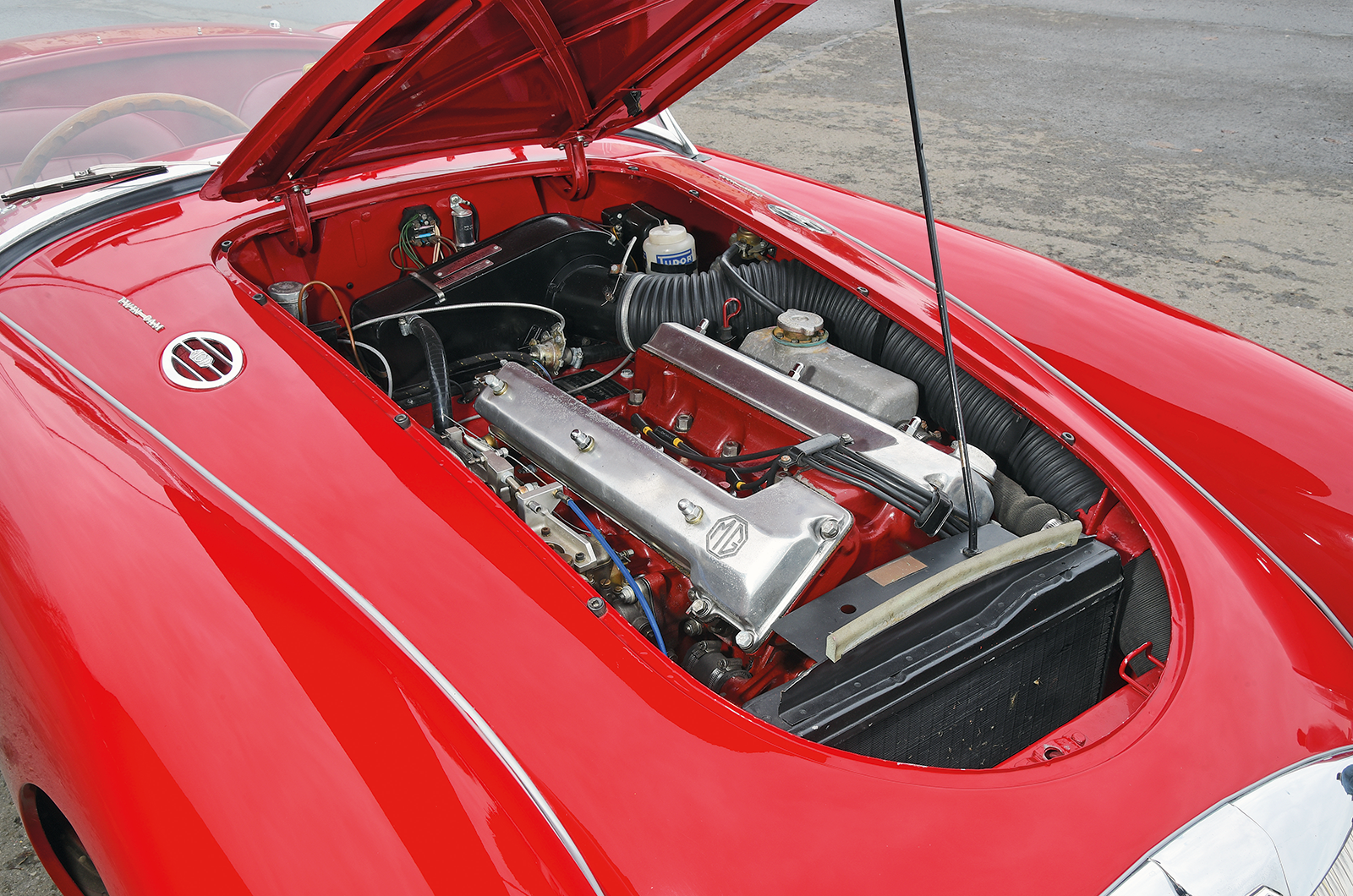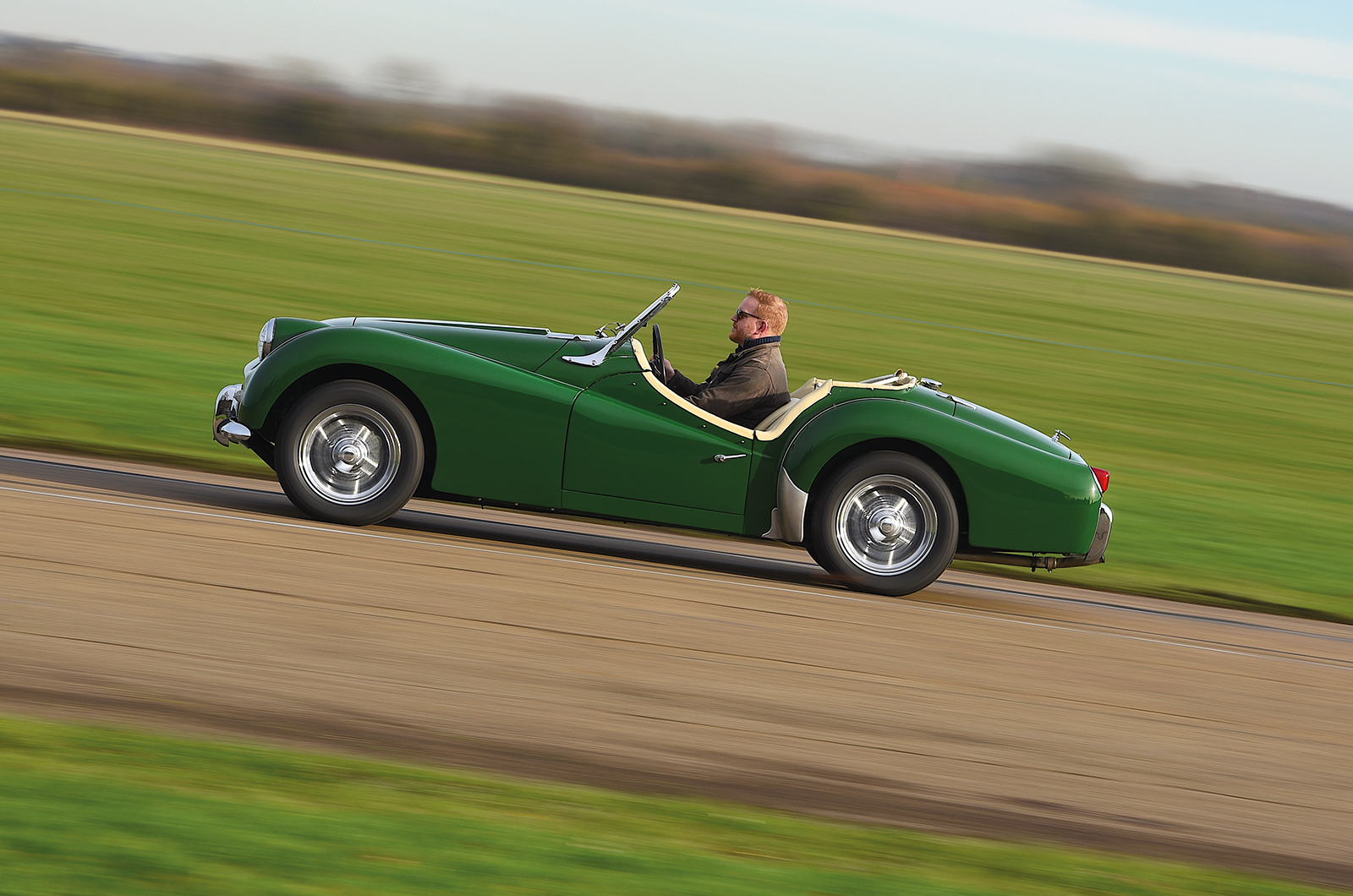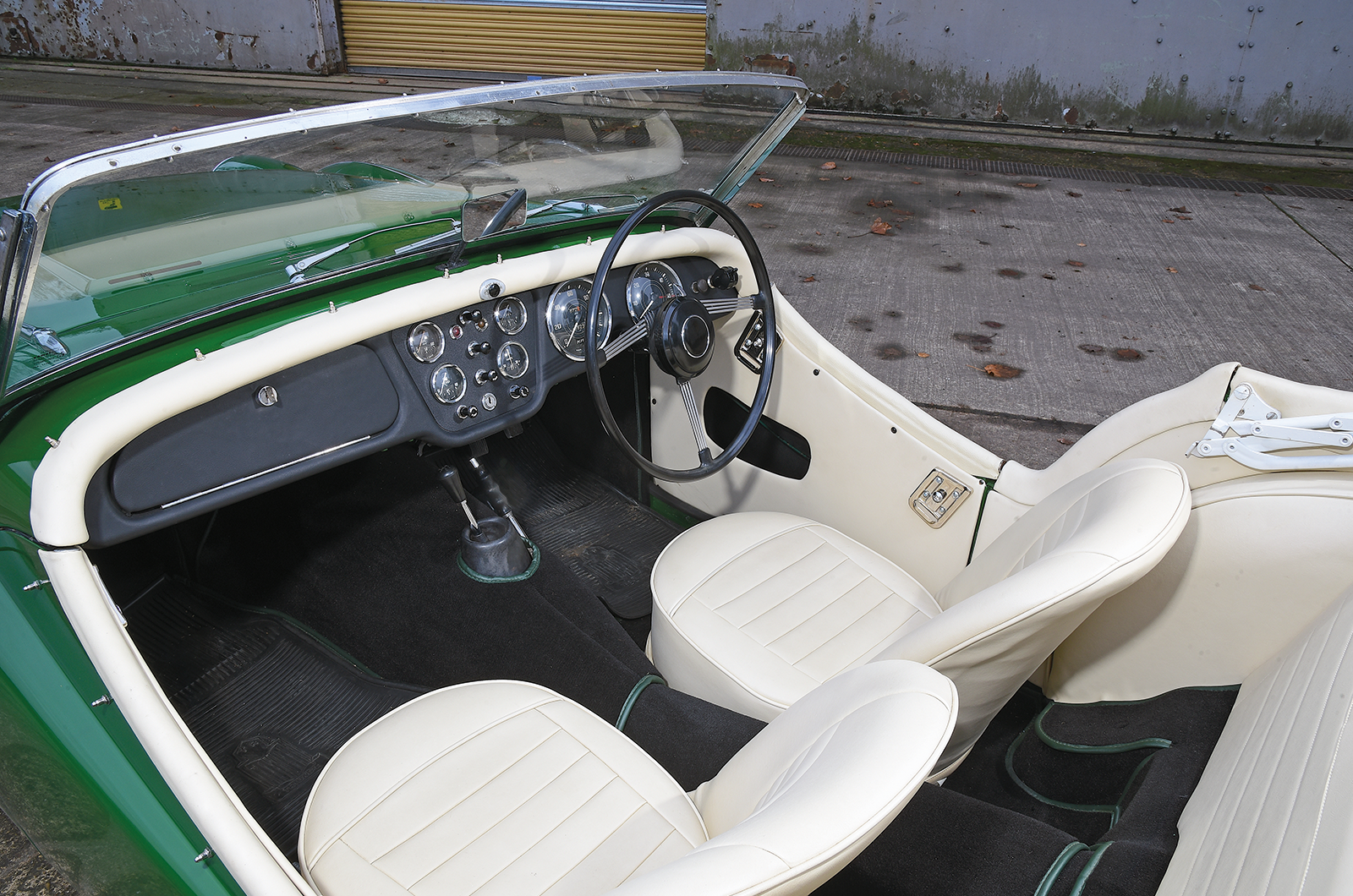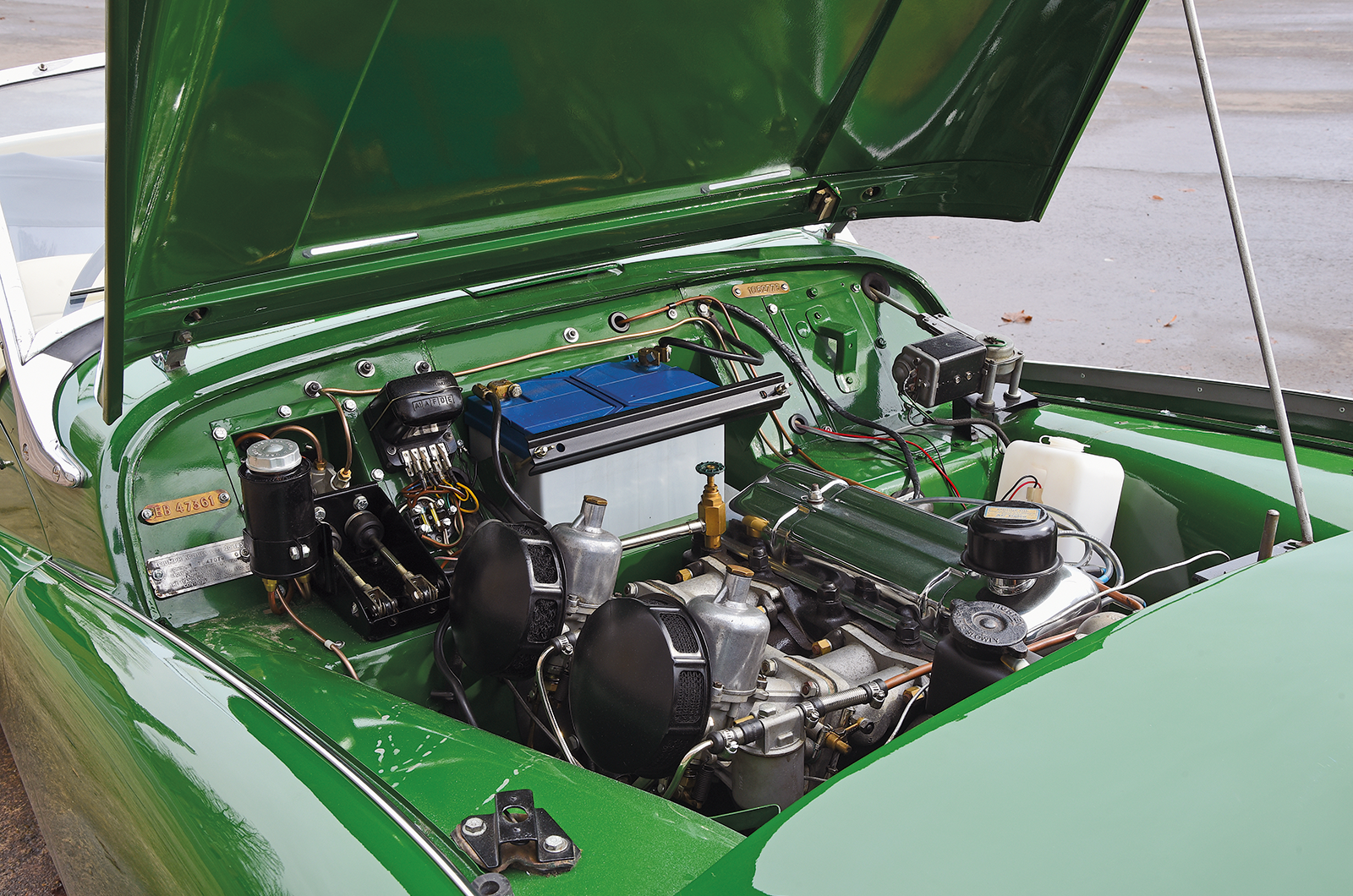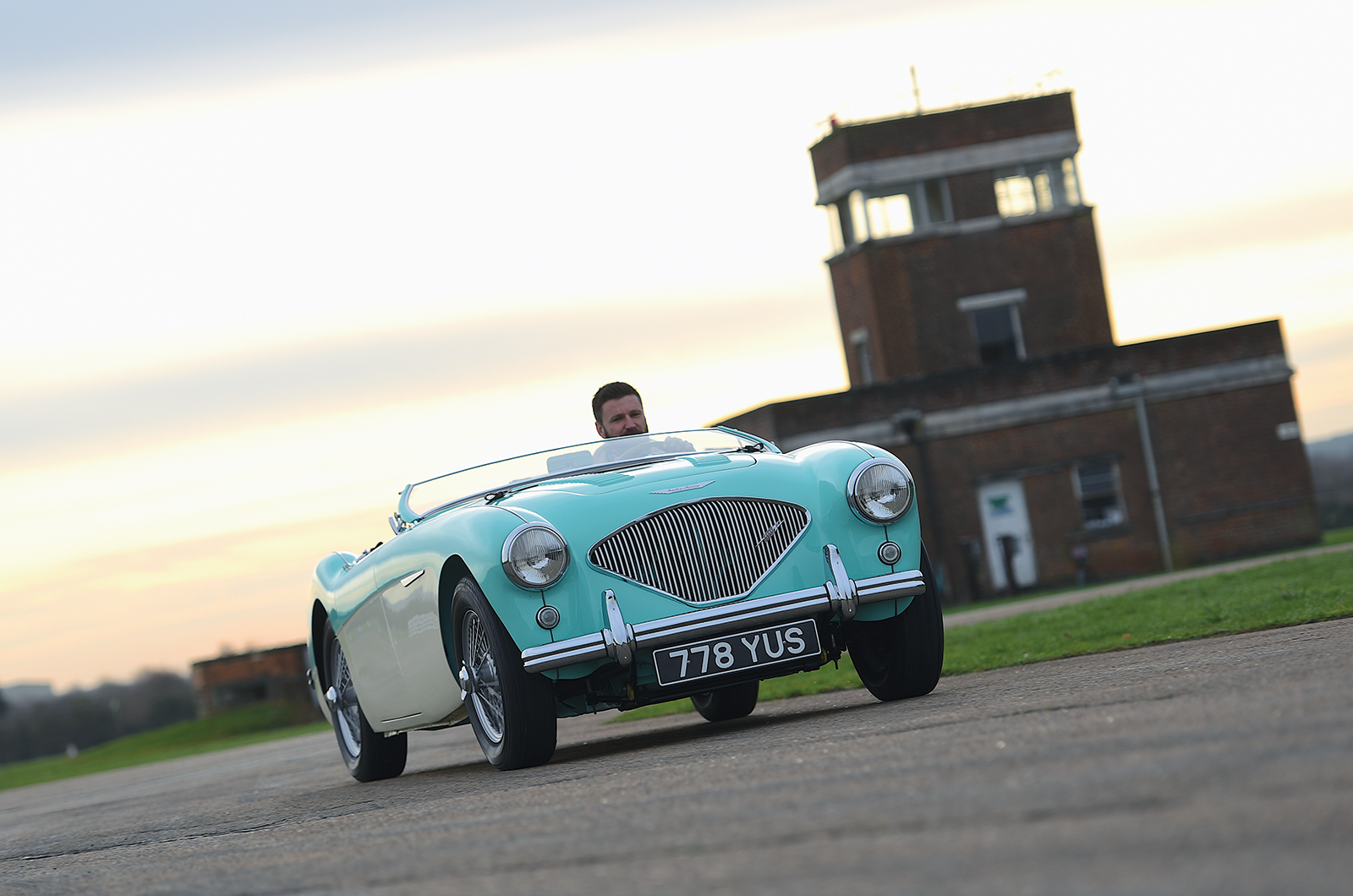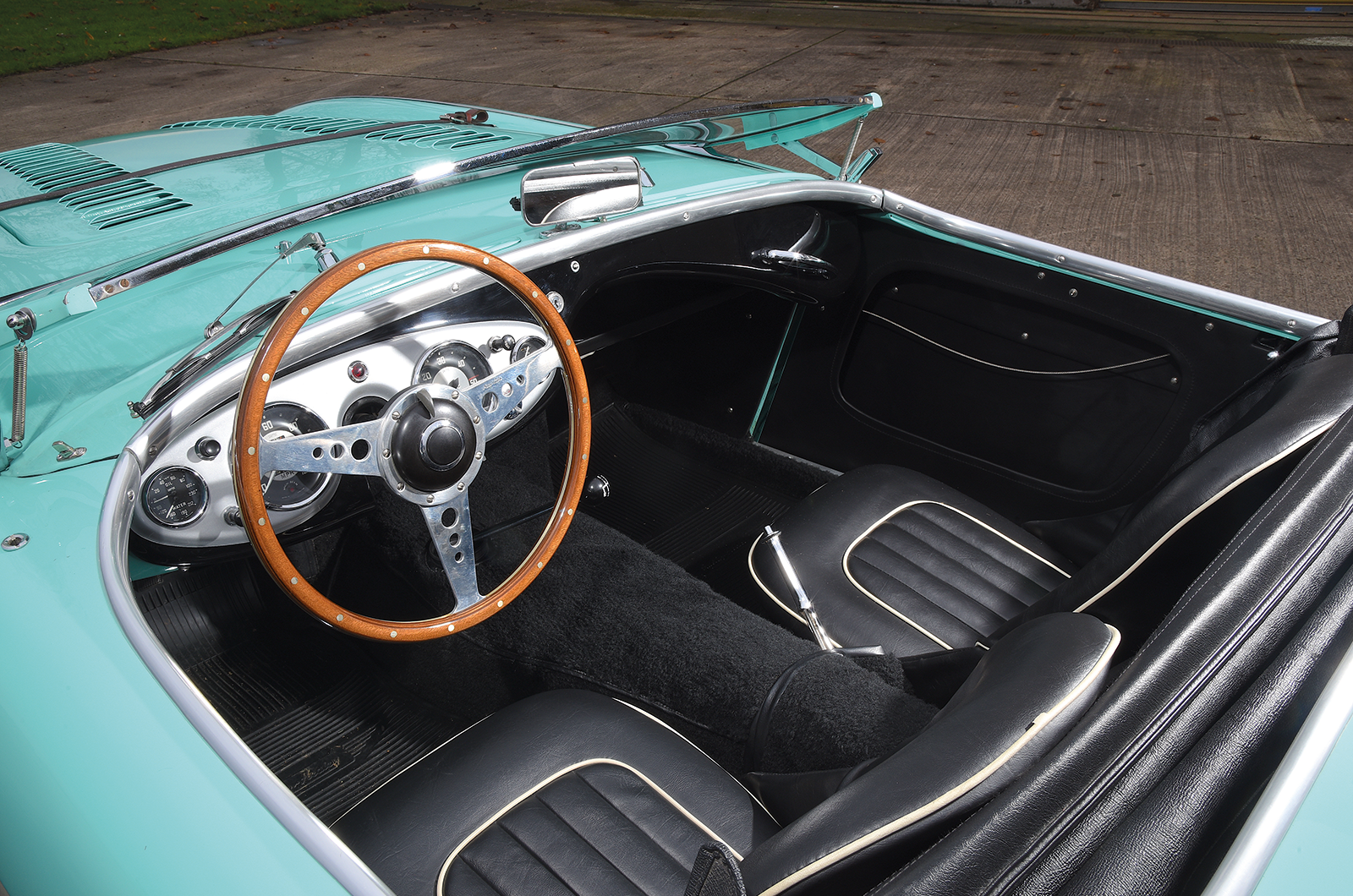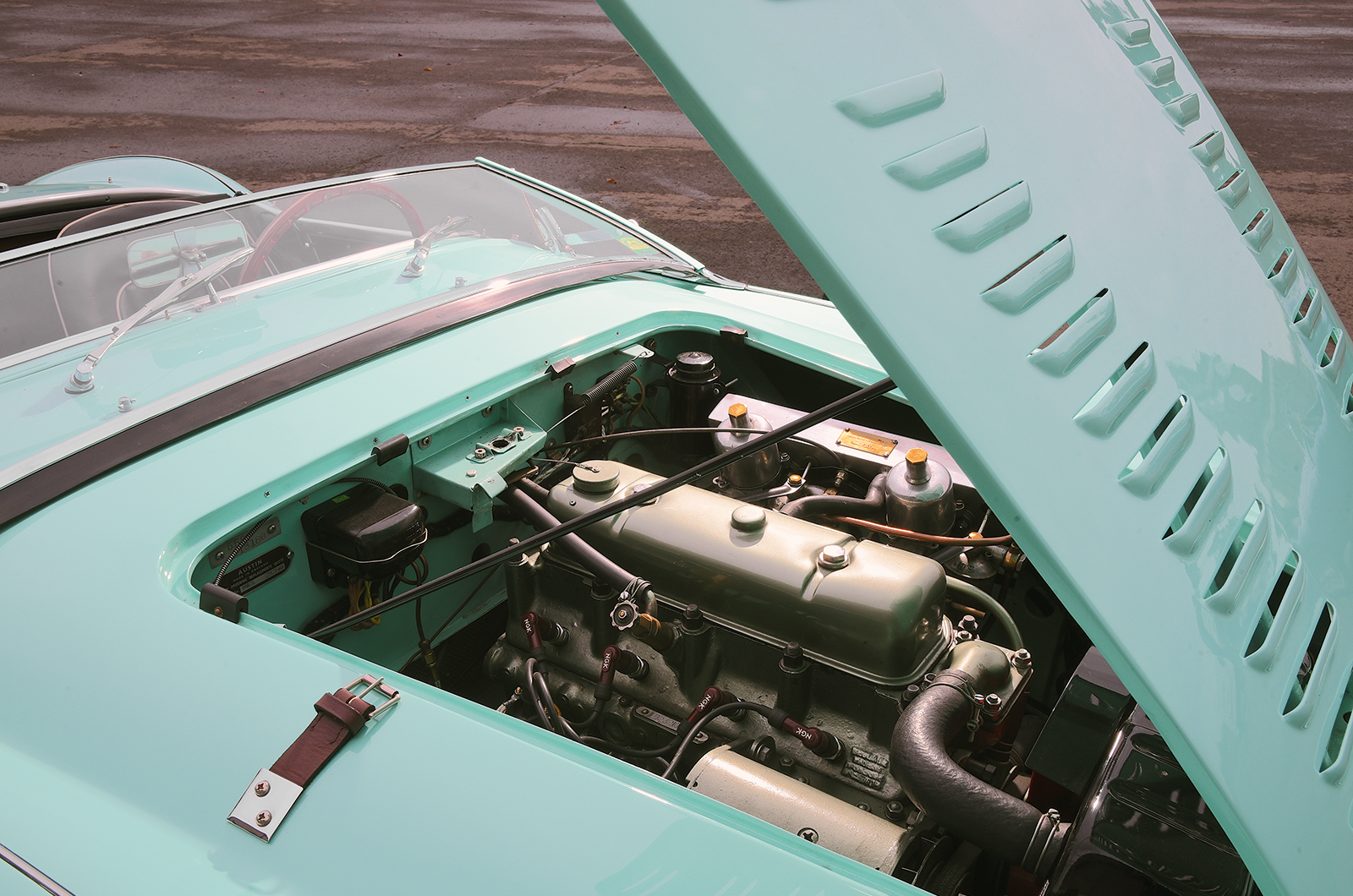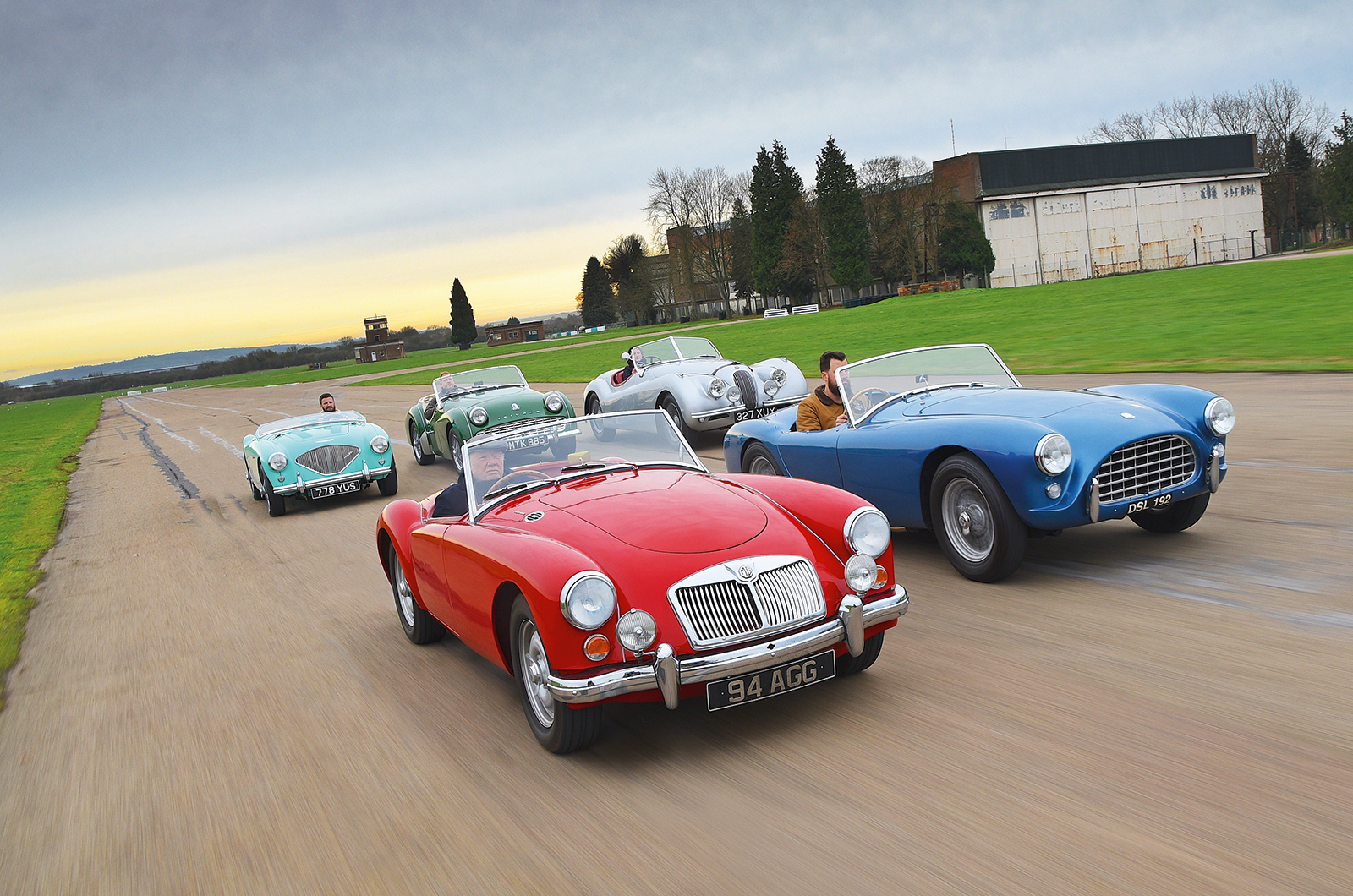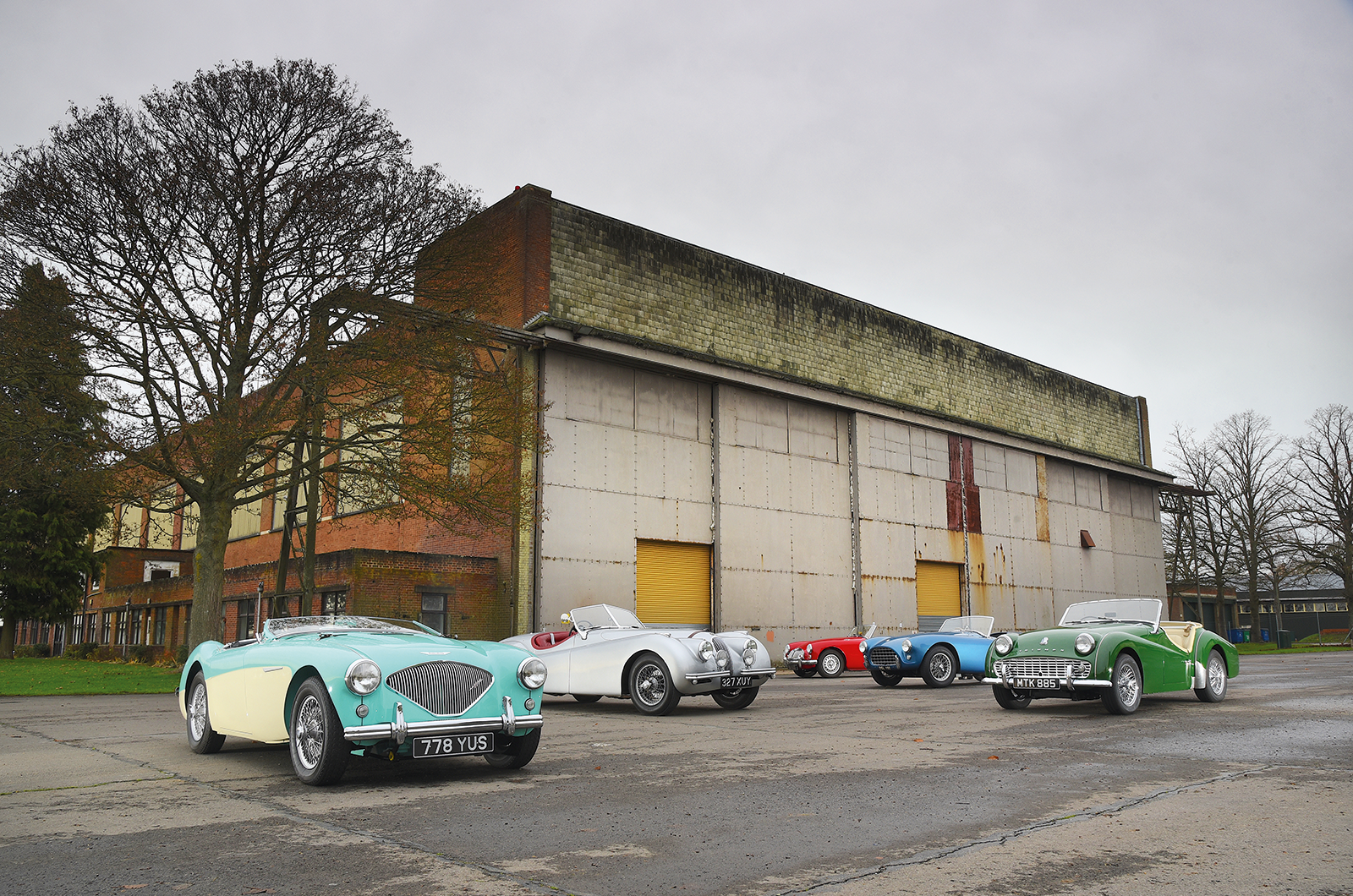Much of that could be repeated in describing the Austin-Healey 100’s behaviour, although its low-slung rear end is better behaved, its steering more smoothly positive and higher-geared.
It should be faster; all I can say is that the A90 engine feels eager and smooth for such a big ‘four’, and pulls strongly through to 4500rpm with a flat burble that is lazily industrial and has rounder edges than the raucous Triumph.
In this left-hooker, the gearlever is helpfully offset towards the driver and, as in all good ’50s road tests, ‘falls easily to hand’ – even if the change is the least appealing of these cars.
Like the TR, the Healey is another great sports-car success story, a blend of beauty and stamina that completely seduced an American market already vulnerable to the charm of a British open two-seater. Jensen built the bodies, and Austin supplied the drivetrain and did the final assembly on a car that would be Donald Healey’s first and most famous commercial success.
Non-standard wheel in spartan cockpit; Austin-sourced ‘four’ offers real muscle
Outwardly, the Healey is up there with the XK120 and the Ace, a perfect blend of curves and muscle that says it all while appearing to not do very much.
Inside, whether deliberately or not, it seems to acknowledge the existence of lanky American customers in being surprisingly roomy while grouping its (minimal) controls around the instruments rather than spreading them across the dash.
It was, and is, a car to put hairs on your chest, although if you set your heart on this rare genuine 100M, with its 110bhp ‘Le Mans-tuned’ engine and louvred bonnet, they will be expensive hairs.
Restored to apparent perfection in 2013 by specialist JME Healeys, this Mille Miglia-eligible car is valued at £175,000. It is one of 640 Healey works-converted M-spec BN2s (meaning a four-speed ’box) built in 1956 – the main clue being that bonnet, which is ostentatiously restrained by a leather strap.
These five cars were among the first people thought of as ‘classics’
As cars that were as nifty, manoeuvrable and fun to drive as the domestic behemoths were (generally) ponderous and dull, it’s not difficult to understand the American market’s attraction to the great British sports car of the 1950s.
Somehow, they were a breed of car only we British seemed able to make in real volume at the time, opening the door to the vast North American market and creating a foundation of goodwill that might have extended beyond the 1970s, had we invested in the creation of the reliable, modern, legislation-friendly sports cars the locals still wanted to buy.
Fifteen or 20 years after they were built, these were perhaps among the first cars people thought of as ‘classics’ in the earliest days of
our particular obsession. They are cars I feel I have been reading about all my life, much older today than the London to Brighton relics were in the 1950s.
A slump in the popularity of ’50s classics has been quietly suggested as owners either die or get too old (or fat) to drive them. Yet they have an appeal that seems eternally youthful, rooted in a world of carefree post-war motoring far removed from today’s highly legislated, overcrowded experience.
It’s a close-run thing, but Buckley would just about go for the Jag
As time machines to take you back to that better place, even if it’s for only a few days each year, I think there will always be buyers for such cars.
Why? Because they are (mostly) beautiful, romantic objects that are engaging to drive in an understandably mechanical way; cars that will forever connect with people who want a ‘real’ experience yet are not so divorced from modern standards that they would frighten the buyer who really wants to own one.
I suppose, at £285,000, you have to really want to own an Ace Bristol, a precision instrument wrought in aluminium that you cannot seriously compare to the off-the-shelf appeal of the TR3A and MGA.
In some ways, the Triumph and MG don’t even feel like all the money at up to £40,000. If £50k for a less-exotic species of big Healey (the standard 100, say) seems a lot more than they used to be, it is perhaps not quite as much as you might expect when things such as TR5s are out there priced at £70,000-plus.
But if I had to take one car home it would probably be the XK, by a short nose over the Ace.
The pride of the British motor industry, the XK120 sealed Jaguar’s reputation as a maker of ‘proper’ cars, although the fact it made 12,000 of them (including dropheads and coupés) means we tend not to talk of XKs in the same hushed tones as the BMW 328 or Alfa Romeo 8C.
For me it is the post-war successor to those cars that put exotic twin-cam performance and styling within the reach of a wider audience. It is still, arguably, the most beautiful Jaguar of all; perfectly proportioned from every angle, it actually looks as if it’s worth the £100k that examples such as this one would command. Which is good value in the grand scheme of things.
And, by the way, I did get to take the Jaguar home, but it rained all weekend. Typical.
Images: Will Williams
Thanks to MG owner Edward Vandyck; Pendine for the AC; Bicester Sports & Classics for the TR; JME Healeys for the 100M; Cotswold Classic Car Restorations for the XK; Historit; and Bicester Heritage for the venue
FACTFILES
JAGUAR XK120
- Sold/no built 1948-’54/7612 (roadster)
- Construction steel box-section chassis, steel body (aluminium for first cars)
- Engine iron-block, alloy-head, dohc 3442cc straight-six, with twin SU carburettors
- Max power 160bhp @ 5200rpm
- Max torque 195Ib ft @ 2500rpm
- Transmission four-speed manual, RWD
- Suspension: front independent, by double wishbones, torsion bars, telescopic dampers and anti-roll bar rear live axle, semi-elliptic leaf springs, lever-arm dampers
- Steering recirculating ball
- Brakes drums
- Length 14ft 51/2in (4407mm)
- Width 5ft 2in (1575mm)
- Height 4ft 41/2in (1334mm)
- Wheelbase 8ft 6in (2591mm)
- Weight 2919Ib (1324kg)
- Mpg 17
- 0-60mph 12 secs
- Top speed 126mph
- Price new £1263 3s 11d (1948)
- Price now £90-150,000
AUSTIN-HEALEY 100M
- Sold/no built 1955-’56/640
- Construction steel ladder chassis, pressed steel body
- Engine all-iron, ohv 2660cc ‘four’, twin SU H6 carburettors
- Max power 110bhp @ 4500rpm
- Max torque 150Ib ft @ 2200rpm
- Transmission four-speed manual with overdrive, RWD
- Suspension: front wishbones, coil springs, anti-roll bar rear live axle, semi-elliptic leaf springs, Panhard rod; lever-arm dampers f/r
- Steering cam and peg
- Brakes drums
- Length 12ft 7in (3835mm)
- Width 5ft 1/2in (1536mm)
- Height 4ft 1in (1244mm)
- Wheelbase 7ft 6in (2286mm)
- Weight 2170Ib (984kg)
- Mpg 22
- 0-60mph 9.6 secs
- Top speed 110mph
- Price new £1064
- Price now £100-175,000
MGA TWIN CAM
- Sold/no built 1958-’60/2111
- Construction steel box-section chassis, steel body
- Engine iron-block, alloy head, dohc 1588cc ‘four’, with two 13/4in SU H6 carburettors
- Max power 108bhp @ 6700rpm
- Max torque 105Ib ft @ 4500rpm
- Transmission four-speed manual, RWD
- Suspension: front independent, by wishbones, coil springs rear live axle, semi-elliptic leaf springs; lever-arm dampers f/r
- Steering rack and pinion
- Brakes discs
- Length 13ft (3962mm)
- Width 4ft 10in (1473mm)
- Height 4ft 2in (1270mm)
- Wheelbase 7ft 10in (2388mm)
- Weight 2156Ib (977kg)
- 0-60mph 13.3 secs
- Top speed 113mph
- Mpg 21.8
- Price new £1027 (1959)
- Price now £30-65,000
TRIUMPH TR3A
- Sold/no built 1957-’62/58,236
- Construction steel box-section chassis, separate steel body
- Engine all-iron, ohv 1991/2138cc ‘four’, with twin SU carburettors
- Max power 100bhp @ 4600rpm
- Max torque 127Ib ft @ 3350rpm
- Transmission four-speed manual, optional overdrive, RWD
- Suspension: front independent, by wishbones, coil springs, telescopic dampers rear live axle, semi-elliptic leaf springs, lever-arm dampers
- Steering cam and peg
- Brakes discs front, drums rear
- Length 12ft 7in (3835mm)
- Width 4ft 7in (1410mm)
- Height 4ft 2in (1270mm)
- Wheelbase 7ft 4in (2235mm)
- Weight 2240Ib (1016kg)
- Mpg 27.1
- 0-60mph 12.5 secs
- Top speed 102mph
- Price new £991 (1959)
- Price now £15-40,000
AC ACE BRISTOL
- Sold/no built 1956-’63/463
- Construction alloy body, tubular chassis
- Engine iron-block, alloy-head, cross-pushrod ohv 1971cc straight-six, triple Solex carbs
- Max power 125bhp @ 5750rpm
- Max torque 122Ib ft @ 4500rpm
- Transmission four-speed manual, optional overdrive, RWD
- Suspension independent, by transverse leaf spring, lower wishbones, telescopic dampers f/r
- Steering Bishop cam steering box
- Brakes drums (front discs from 1957)
- Length 12ft 8in (3859mm)
- Width 4ft 11in (1500mm)
- Height 4ft 1in (1244mm)
- Wheelbase 7ft 6in (2286mm)
- Weight 1800Ib (816kg)
- Mpg 23
- 0-60mph 9.1 secs
- Top speed 116mph
- Price new £2045 (1959)
- Price now £250,000-plus
READ MORE
20 appreciating classics and what you should pay for them
Bygone barges: ’80s saloon cars that time forgot
Starter classics: 14 great cars for a first-timer
Martin Buckley
Senior Contributor, Classic & Sports Car
